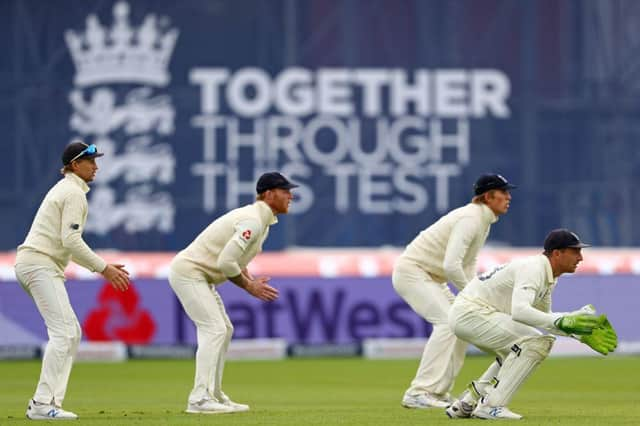State of the Nation - Cricket will survive but not as we have come to love it


The tournament perceived as the great saviour of English cricket, at least by those blinded by the prospect of banknotes, will instead launch this summer, pandemic permitting.
Tom Harrison, chief executive of the England and Wales Cricket Board, and one of those wearing the blinkers, believes that The Hundred is now more important than ever to help mitigate financial losses caused by coronavirus of over £100m and counting.
Advertisement
Hide AdAdvertisement
Hide AdThe proof of the pudding will be in the eating, but as with all sports, cricket faces significant challenges because of the crisis, along with an ongoing battle for relevance.


If one looks at the various balance sheets, the problems of getting cricket played at school/recreational level (already significant pre-Covid), and the increasing marginalisation of the game on broadcasting/streaming services, cricket is now more niche than ever.
In an attempt to fight back and to heal the often self-inflicted wounds (most obviously the lack of proper cricket on free-to-air television which once inspired generations of players and fans), the game is trying to turn itself into something that is not really cricket at all, but an increasingly bastardized version of it – ‘cricball’, perhaps, with 20-over, 10-over, and 100-ball thrashes all the rage, replete with all the peripheral “entertainment” required to conceal its banality.
‘Cricball’ is growing but cricket, alas, is assuredly not – not Test cricket, certainly, or the first-class game, as the sport steadily morphs into something else.
Advertisement
Hide AdAdvertisement
Hide AdSome people are perfectly happy about that and some people like both ‘cricball’ and cricket, which is fine. Each to their own, and all that.
But the sport that most of us fell in love with as youngsters, and which we recognise to be “proper cricket” so to say, continues on its death-by-a-thousand-cuts decline.
If next winter’s Ashes series is hidden away on some Mickey Mouse streaming service, indeed, as has been mooted, how long before even the pinnacle of the game begins to lose relevance?
People have only so much money to go around (and less and less for luxuries such as streaming services), while you pretty much have to pay for several subscription services already to keep tabs on everything that is going on.
Advertisement
Hide AdAdvertisement
Hide AdThrow in the fact that BBC Test Match Special is a shadow of its former glory, having lost the rights to various overseas tours and dispensed with the services of such insightful figures as Sir Geoffrey Boycott, who could talk in context about the game’s history as well as about the present, and the future looks bleak on-and-off the field.
Indeed, the quality of broadcasting and coverage should not be underestimated when it comes to the subject of attracting and retaining spectators.
Already, many newspapers have long since given up on cricket, while watching the game on television is often an unbearable experience due to the endless technical analysis and the fact that many pundit ex-players simply cannot stop talking.
This has the effect of making people switch off their televisions, or at least reaching for the remote control to turn down the sound.
Advertisement
Hide AdAdvertisement
Hide AdOf course, if you put three former players together in one commentary stint, give them no proper training and have no-one who can tell them to cut out the stream of consciousness prattle that invariably follows, then what do you expect? John Arlott would be turning in his grave.
Cricket has muddled through 2020 as best it could, helped by some excellent logistical work by Tom Harrison and the ECB, but only a fool would say that the garden is rosy.
The future for ‘cricball’, on the other hand, and for those who earn an awful lot of money from their involvement in it, not least the players, looks fairly good for the foreseeable future. But there is certainly no longer much incentive for children to grow up wanting to be remembered for their skills in the first-class game.
So for those of us whose heads are not turned by The Hundred, the IPL, the Big Bash and so on, and believe me we do exist, the outlook is grimmer than the Brothers Grimm.
Still, Happy New Year. Perhaps it is just a bad dream.